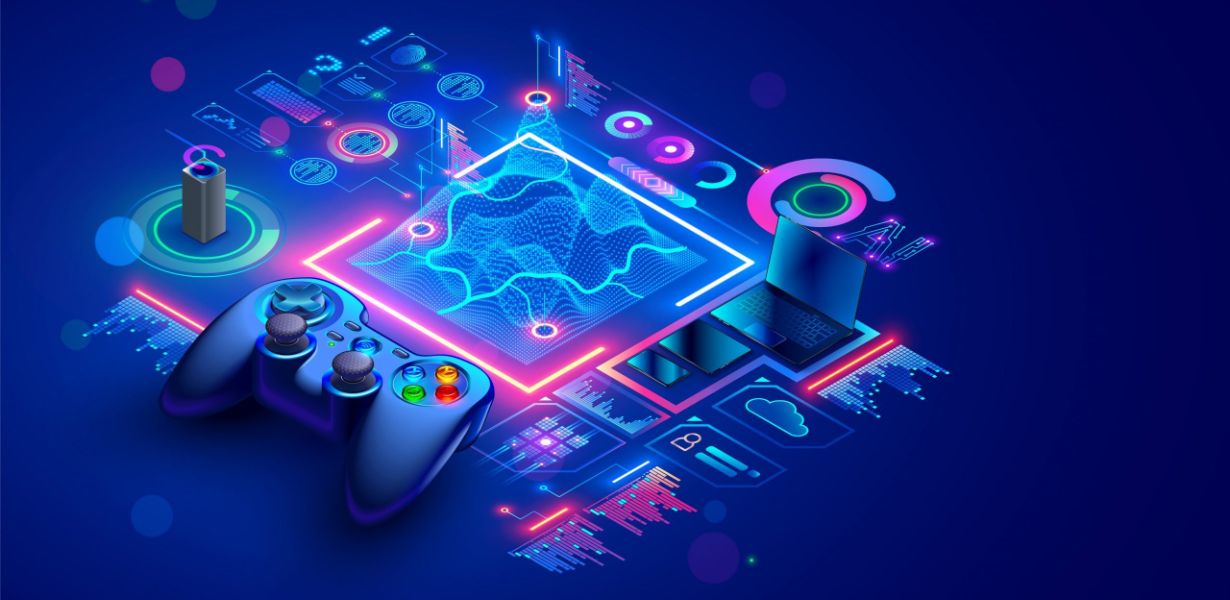
In the fast-paced world of technology and entertainment, the gaming industry has been at the forefront of innovation. From the early days of pixelated characters to the immersive virtual worlds we experience today, gaming has come a long way. A significant catalyst in this evolution is AI-driven game development. In this extensive blog, we delve deep into the realm of AI-powered games, exploring the impact, the possibilities, and the future.
Understanding AI in Game Development
Artificial Intelligence, often abbreviated as AI, is the simulation of human intelligence in machines, enabling them to perform tasks that typically require human intelligence, such as problem-solving and decision-making. In the realm of game development, AI is utilized to create more dynamic, challenging, and engaging gaming experiences. It empowers game characters and entities to interact with players in a more lifelike manner, making games more exciting. AI in gaming is not new, but recent advancements have taken it to a whole new level. Thanks to machine learning and deep learning algorithms, AI can now adapt to the player’s behavior and make games more challenging and immersive.
AI-Driven Game Mechanics
Dynamic Environments (H4)AI-driven games offer dynamic environments that react to player actions. Whether it’s a first-person shooter or an open-world adventure, AI algorithms can adjust the in-game world, making every playthrough unique.
Smart NPCs (H4)Non-playable characters (NPCs) in games are no longer just pre-programmed entities following a set path. AI allows NPCs to adapt to changing situations, respond to player choices, and even develop their own personalities.
Realistic Physics (H4)AI can be used to create realistic physics simulations, making in-game objects and characters behave as they would in the real world. This adds an extra layer of immersion and challenge to games.
Procedural Content Generation (H4)AI can generate game content on the fly, including levels, quests, and even narrative elements. This eliminates the need for designers to manually create every piece of content, making games more expansive.
AI-Driven Graphics and Visuals
Gone are the days of static textures and rigid character movements. AI has revolutionized the way games look and feel:
Enhanced Graphics (H4)AI-powered upscaling techniques, like DLSS, can take lower-resolution textures and upscale them to create stunning, lifelike visuals, even on lower-end hardware.
Facial Animation (H4)With AI, game characters can exhibit more realistic facial expressions and emotions, making cutscenes and dialogues more engaging.
Gesture and Movement Recognition (H4)AI can understand player movements and gestures through devices like the Kinect, enabling interactive and immersive gaming experiences.
AI for Game Personalization
The magic of AI-driven game development lies in its ability to create personalized gaming experiences:
Adaptive Difficulty (H4)AI can monitor a player’s skill level and adjust the game’s difficulty in real-time, ensuring an enjoyable challenge without unnecessary frustration.
Tailored Content (H4)Games can use AI to recommend in-game purchases, expansions, or even suggest game modes based on a player’s preferences and playstyle.
AI in Game Testing and Bug Detection
Ensuring a bug-free gaming experience is paramount. AI plays a crucial role in identifying and resolving issues:
Automated Testing (H4)AI can test various aspects of the game, from graphics to functionality, to find and report bugs faster than human testers.
Behavior Analysis (H4)By analyzing gameplay data, AI can detect unusual player behavior, helping developers identify potential problems and cheaters in multiplayer games.
Future Possibilities and Challenges
The potential for AI-driven game development is vast, but it’s not without its challenges:
Realistic AI (H3)The quest for creating truly human-like AI in games is ongoing. Developers are striving to make AI characters more convincing and interactive.
Ethical Concerns (H3)As AI becomes more integral to game development, questions of ethics and responsible AI usage arise, particularly regarding data privacy and fairness.
Technical Limitations (H3)While AI has come a long way, there are still technical limitations that hinder its full potential. Overcoming these limitations is a priority for the industry.
Final Words
AI-driven game development is not just a technological advancement; it’s a gateway to a new era of gaming. The fusion of AI and gaming has the potential to create experiences that are not only entertaining but deeply personal and engaging. As we navigate this ever-evolving landscape, the possibilities are limitless. The future of gaming is being shaped by AI, and it’s an exciting journey to be part of.
Commonly Asked Questions
Q1: How does AI enhance the gaming experience?
AI enhances the gaming experience by creating dynamic environments, smart NPCs, realistic physics, and procedural content generation. It adapts to player behavior, making games more challenging and immersive.
Q2: Can AI-driven graphics improve gaming visuals on lower-end hardware?
Yes, AI-powered upscaling techniques, such as DLSS, can enhance graphics even on lower-end hardware, offering a visually stunning experience.
Q3: How does AI personalize gaming experiences?
AI personalizes gaming experiences by adapting game difficulty, recommending in-game content, and tailoring gameplay based on player preferences.
Q4: What are the ethical concerns in AI-driven game development?
Ethical concerns in AI-driven game development include data privacy, fairness, and responsible AI usage. Developers must navigate these issues carefully.
Q5: What is the future of AI-driven game development?
The future of AI-driven game development holds the promise of even more realistic AI characters, overcoming technical limitations, and shaping a gaming landscape that is both exciting and personal. The journey is just beginning.









